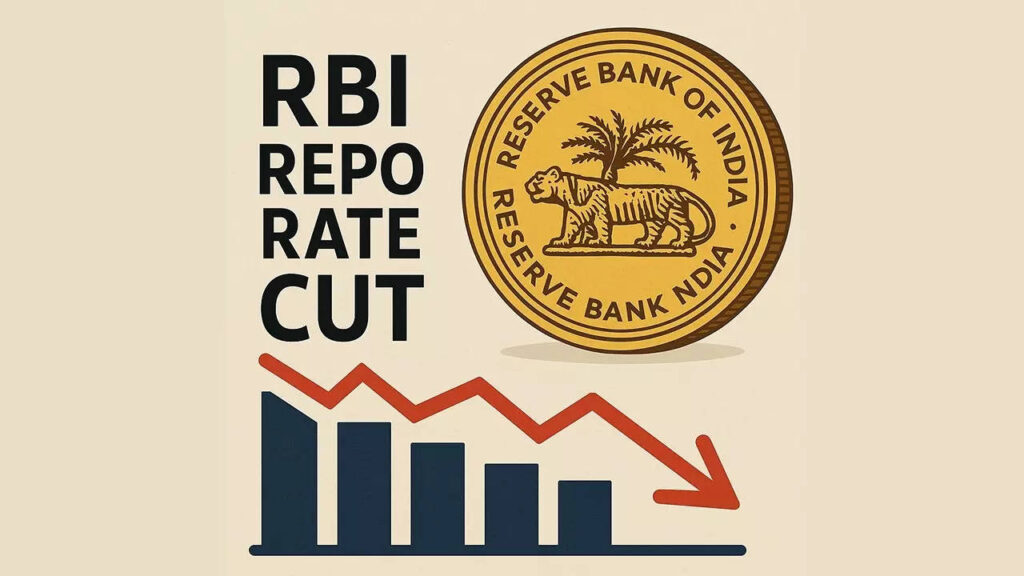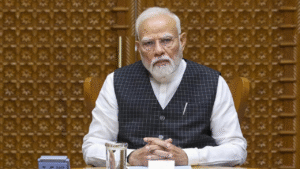RBI Likely to Reduce Interest Rates Due to Growing Economic Risks from U.S. Tariffs

The Reserve Bank of India (RBI) is under increasing pressure to cut interest rates in response to growing economic challenges. One of the major contributors to the uncertainty is the escalating trade tensions between the United States and other global economies, particularly the risks posed by U.S. tariffs. These tariffs, which are essentially taxes imposed on foreign goods, have profound implications on global trade and economies. For India, this situation could significantly affect its economic growth, inflation, and overall fiscal health.
This article delves into why the RBI may opt to reduce interest rates in the current economic environment and how rising economic risks from U.S. tariffs play a crucial role in shaping the central bank’s policy decisions.
The Role of Interest Rates in the Indian Economy
Interest rates are one of the most important tools that central banks, like the RBI, use to control economic activity. A higher interest rate tends to reduce consumer spending and business investment, as borrowing becomes more expensive. Conversely, a lower interest rate encourages spending and investment, which can boost economic activity. The RBI uses this tool to control inflation and stimulate or cool down the economy, depending on prevailing economic conditions.
India’s central bank sets its policy rates based on a variety of domestic and international factors. These include inflation levels, currency fluctuations, the overall economic growth rate, and any external pressures such as global trade wars and geopolitical tensions. In the current environment, India faces a combination of slow economic growth, rising inflation, and the looming risks associated with global trade disruptions, especially stemming from the U.S.-China trade conflict.
The Impact of U.S. Tariffs on the Indian Economy
U.S. tariffs, particularly the ones imposed on Chinese goods, have far-reaching implications for global trade. India, as a large and growing economy, finds itself both directly and indirectly impacted by these global trade shifts. Here’s how:
Disruption in Global Supply Chains: U.S. tariffs on Chinese goods and retaliatory tariffs from China have disrupted global supply chains. Many of the goods that were previously being imported from China are now facing higher costs due to tariffs. While this provides a short-term advantage to Indian manufacturers who may now gain market share, the longer-term effects could be more damaging. For instance, if the global supply chain remains fractured, it can lead to higher input costs, inefficiencies, and reduced trade volumes, affecting India’s export sector.
Global Inflationary Pressures: Tariffs on Chinese goods can also lead to inflationary pressures, which are felt globally. This rise in prices can increase the cost of living in India, making it difficult for the RBI to keep inflation in check. In such a scenario, the RBI faces the difficult challenge of balancing the need for economic stimulus with the need to control inflation. A rise in domestic inflation due to higher import prices could push the central bank to lower interest rates to support domestic growth, despite inflationary pressures.
Currency Volatility: Trade tensions, particularly involving the U.S. and China, often lead to greater volatility in global financial markets. For India, this can result in fluctuations in the value of the rupee. A depreciating rupee increases the cost of imports, which, in turn, fuels inflation. The RBI could choose to lower interest rates to counterbalance any negative effects on domestic economic growth caused by a weaker rupee.
Reduction in Global Demand: As the U.S. imposes tariffs, it could lead to reduced demand for goods and services globally, especially from markets like China. India, which exports a significant portion of its goods to the U.S. and other global markets, might see a slowdown in its export sector. This reduction in demand can further strain economic growth and make it harder for businesses to sustain operations. In response, the RBI might lower interest rates to stimulate domestic investment and consumption.
Why a Rate Cut Could Be the Right Move
The decision to cut interest rates is primarily aimed at stimulating economic activity. If the RBI cuts interest rates, it would lower borrowing costs for businesses and consumers, encouraging spending and investment. This is particularly important in the context of a slowing economy, where demand might be weak, and inflation pressures might remain relatively manageable.
Given the external risks posed by the U.S. tariffs and the potential for a slowdown in global trade, the RBI might decide to focus more on boosting domestic growth rather than worrying about inflationary spikes. This is especially pertinent when inflation is still within a manageable range, and growth remains sluggish.
Potential Benefits of a Rate Cut
Encouraging Investment: Lower interest rates could make credit cheaper, encouraging businesses to borrow for expansion, infrastructure projects, and new ventures.
Boosting Consumption: As loans become cheaper, consumers may be more likely to take out loans for homes, cars, and other big-ticket items, leading to a boost in domestic consumption.
Supporting Exporters: With a weaker global demand environment, a rate cut could help offset some of the financial strain on Indian exporters by lowering their cost of capital.
The economic risks stemming from U.S. tariffs, combined with ongoing global trade tensions, make the RBI’s decision-making process challenging. In the face of these external pressures, the RBI is likely to focus on stimulating domestic growth through a rate cut while managing inflationary pressures. By lowering interest rates, the RBI could help buffer the Indian economy from global uncertainties and encourage investment, spending, and overall economic activity.
However, any decision to cut rates will be closely scrutinized by economists, as it carries both risks and rewards. The central bank must balance the need to support economic growth with the necessity of maintaining price stability and controlling inflation in an uncertain global economic landscape.



